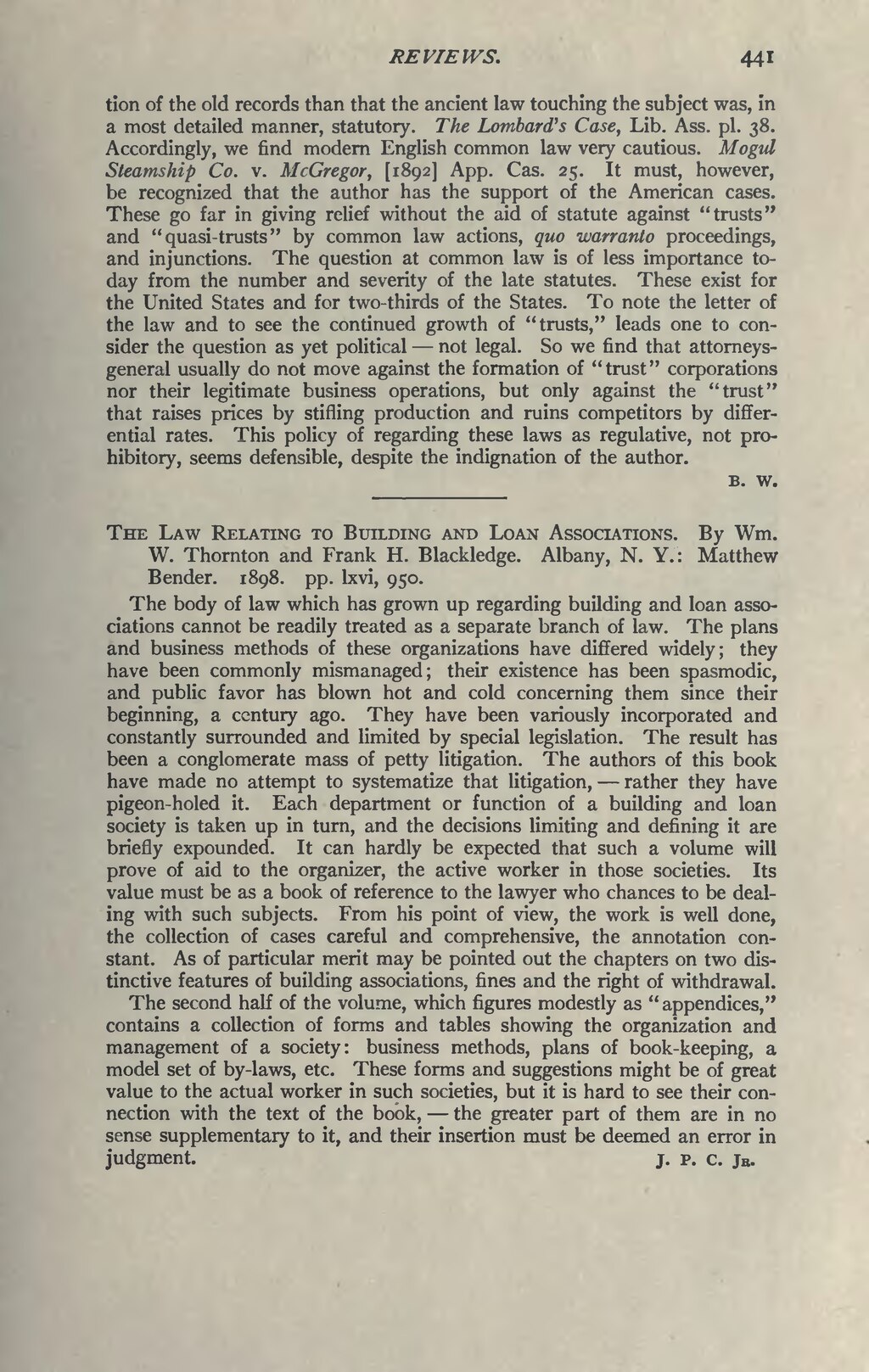REVIEWS. 441 tion of the old records than that the ancient law touching the subject was, in a most detailed manner, statutory. The Lombard's Case, Lib. Ass. pi. 38. Accordingly, we find modern English common law very cautious. Mogul Steamship Co. v. McGregor, [1892] App. Cas. 25. It must, however, be recognized that the author has the support of the American cases. These go far in giving relief without the aid of statute against "trusts" and "quasi-trusts" by common law actions, quo warranto proceedings, and injunctions. The question at common law is of less importance to- day from the number and severity of the late statutes. These exist for the United States and for two-thirds of the States. To note the letter of the law and to see the continued growth of "trusts," leads one to con- sider the question as yet political — not legal. So we find that attorneys- general usually do not move against the formation of "trust" corporations nor their legitimate business operations, but only against the "trust" that raises prices by stifling production and ruins competitors by differ- ential rates. This policy of regarding these laws as regulative, not pro- hibitory, seems defensible, despite the indignation of the author. B. w. The Law Relating to Building and Loan Associations. By Wm. W. Thornton and Frank H. Blackledge. Albany, N. Y.: Matthew Bender. 1898. pp. Ixvi, 950. The body of law which has grown up regarding building and loan asso- ciations cannot be readily treated as a separate branch of law. The plans and business methods of these organizations have differed widely; they have been commonly mismanaged; their existence has been spasmodic, and public favor has blown hot and cold concerning them since their beginning, a century ago. They have been variously incorporated and constantly surrounded and limited by special legislation. The result has been a conglomerate mass of petty litigation. The authors of this book have made no attempt to systematize that litigation, — rather they have pigeon-holed it. Each department or function of a building and loan society is taken up in turn, and the decisions limiting and defining it are briefly expounded. It can hardly be expected that such a volume will prove of aid to the organizer, the active worker in those societies. Its value must be as a book of reference to the lawyer who chances to be deal- ing with such subjects. From his point of view, the work is well done, the collection of cases careful and comprehensive, the annotation con- stant. As of particular merit may be pointed out the chapters on two dis- tinctive features of building associations, fines and the right of withdrawal. The second half of the volume, which figures modestly as "appendices," contains a collection of forms and tables showing the organization and management of a society: business methods, plans of book-keeping, a model set of by-laws, etc. These forms and suggestions might be of great value to the actual worker in such societies, but it is hard to see their con- nection vnth the text of the book, — the greater part of them are in no sense supplementary to it, and their insertion must be deemed an error in judgment. j. p. c. Jb.
Page:Harvard Law Review Volume 12.djvu/461
This page needs to be proofread.
441
HARVARD LAW REVIEW.
441
